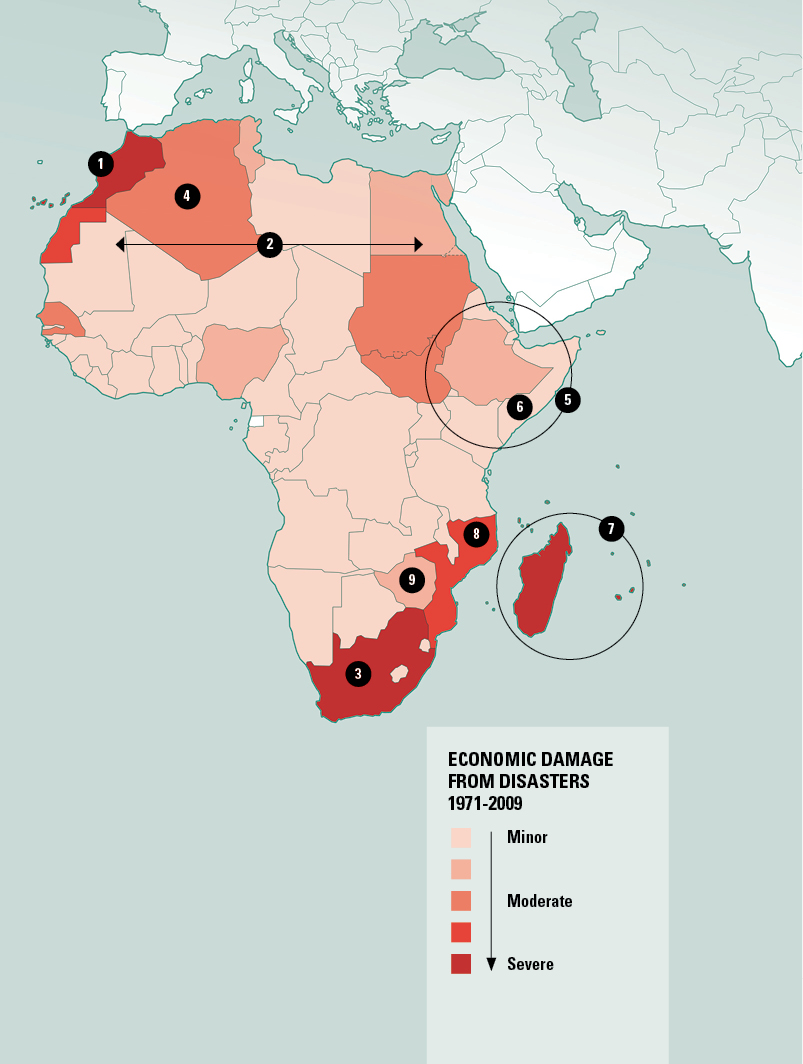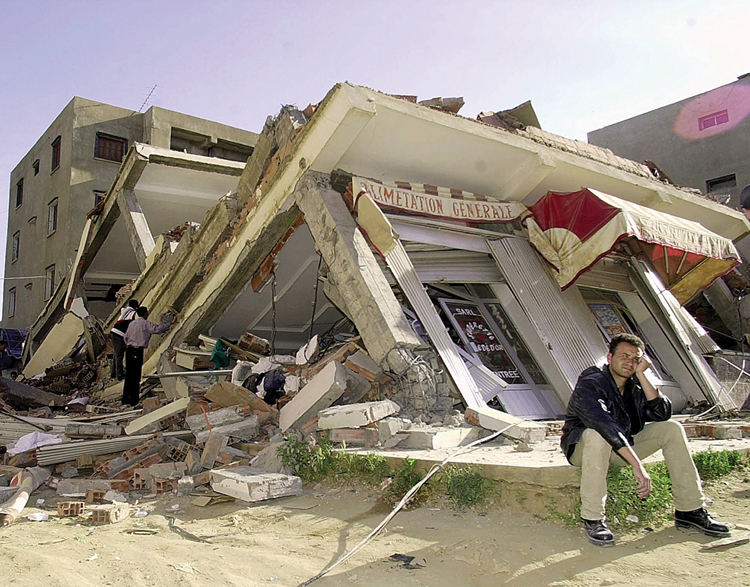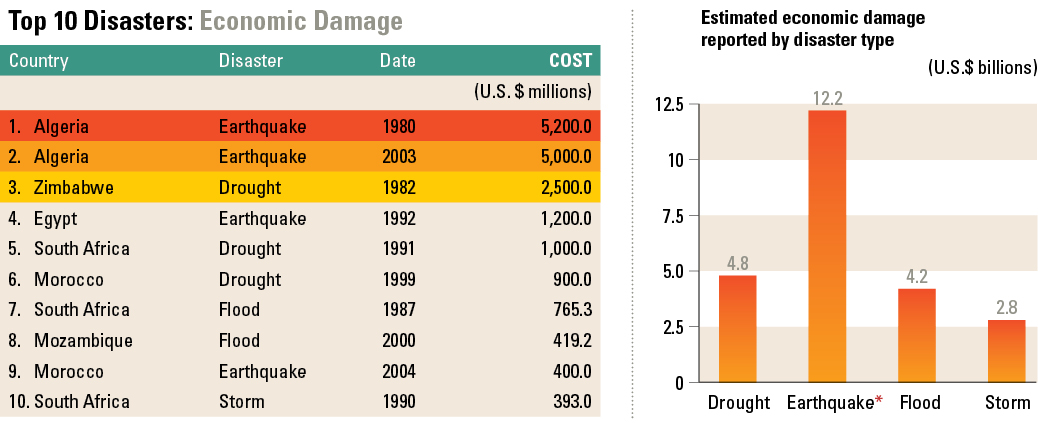Africa from 1980 to 2008
ADF STAFF
Africa is home to a wide range of natural disasters. Floods come along with the rainy seasons in Mozambique, Madagascar and Ghana. Famines and droughts are common in East Africa, especially Somalia and Ethiopia. Earthquakes occasionally shake North African countries, and locust swarms hit many of the Sahel nations. Migration and displacement can set the stage for catastrophic disease outbreaks. HIV/AIDS is prevalent in Sub-Saharan Africa, and the “meningitis belt” stretches from the Red Sea to the Atlantic Ocean. African nations have dealt with outbreaks of measles, cholera, typhoid fever, polio, and the Ebola and Marburg viruses. This is a statistical overview of African natural disasters from 1980 to 2008.


Major Disasters on the African Continent
- Morocco
A 2004 earthquake in northern Morocco killed 629 people and left more than 15,000 homeless. - Sahel
In 2004, swarms of locusts devoured crops in Mauritania, Senegal, Mali, Niger and other Sahel nations, causing an economic impact of $300 million. - South Africa
A flood in 1987 and a drought in 1991 had a total economic impact of more than $2 billion. - Algeria
In 2003, an earthquake with its epicenter in the northern Algerian Boumerdès Province killed more than 2,000 and left 200,000 homeless. - East Africa
Between 2011 and 2012, droughts hit Ethiopia, Somalia, Djibouti, Kenya and neighboring countries. Called the worst drought in 60 years, death estimates range from 50,000 to more than 250,000. - Somalia
A flood in the fall of 1997 caused more than 2,300 deaths in the south of the country. - Madagascar, Mauritius and La Réunion
Tropical cyclones regularly hit these islands. In 2012, Cyclone Giovanna hit Madagascar and left more than 11,000 homeless. - Mozambique
A flood in 2000 killed 800, and another flood in 2013 killed more than 100 and displaced 185,000. - Zimbabwe
In 2008-2009, a cholera outbreak sickened nearly 100,000 and resulted in 4,200 deaths.



